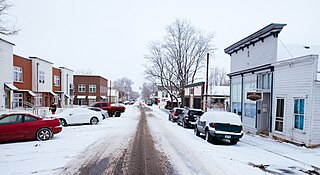
The City of Lafayette is a home rule municipality located in southeastern Boulder County, Colorado, United States. The city population was 30,411 at the 2020 United States Census.

Scofield is a town in Carbon County, Utah, United States. The population was 23 at the 2010 census. Scofield's name is frequently applied to the 1900 mine disaster in the Pleasant Valley Coal Company's Winter Quarters mine. The community was named for General Charles W. Scofield, a timber contractor and local mine official. It is the smallest incorporated area in Utah by population.
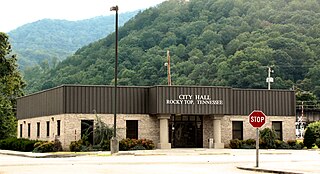
Rocky Top is a city in Anderson and Campbell counties in the eastern part of the U.S. state of Tennessee, northwest of Knoxville. The population was 1,628 at the 2020 US Census. Most of the community is in Anderson County and is included in the Knoxville Metropolitan Statistical Area. On June 26, 2014, the city officially changed its name from Lake City to Rocky Top, after a last-ditch effort by the copyright owners of the song "Rocky Top" was denied by a federal court.

John Price Buchanan was an American politician and farmers' advocate. He served as the 25th governor of Tennessee from 1891 to 1893, and was president of the Tennessee Farmers' Alliance and Laborers' Union in the late 1880s. Buchanan's lone term as governor was largely marred by the Coal Creek War, an armed uprising by coal miners aimed at ending the state's convict lease system.
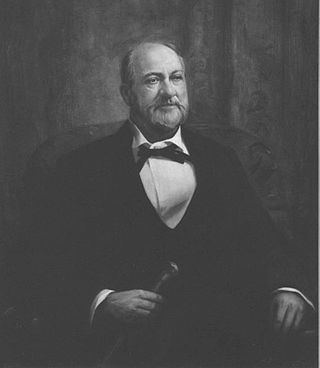
Peter Turney was an American politician, soldier, and jurist, who served as the 26th governor of Tennessee from 1893 to 1897. He was also a justice of the Tennessee Supreme Court from 1870 to 1893, and served as the court's Chief Justice from 1886 to 1893. During the Civil War, Turney was colonel of the First Tennessee Regiment, one of the first Tennessee units to join the Confederate Army.
A mining accident is an accident that occurs during the process of mining minerals or metals. Thousands of miners die from mining accidents each year, especially from underground coal mining, although accidents also occur in hard rock mining. Coal mining is considered much more hazardous than hard rock mining due to flat-lying rock strata, generally incompetent rock, the presence of methane gas, and coal dust. Most of the deaths these days occur in developing countries, and rural parts of developed countries where safety measures are not practiced as fully. A mining disaster is an incident where there are five or more fatalities.
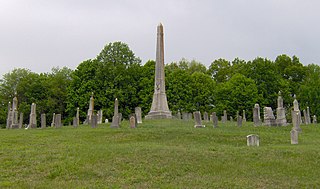
The Fraterville Mine disaster was a coal mine explosion that occurred on May 19, 1902 near the community of Fraterville, in the U.S. state of Tennessee. Official records state that 216 miners died as a result of the explosion, from either its initial blast or from the after-effects, making it the worst mining disaster in the United States' history, and remains the worst disaster in the history of Tennessee. However, locals claim that the true number of deaths is greater than this because many miners were unregistered and multiple bodies were not identified. The cause of the explosion was likely ignition of methane gas which had built up after leaking from an adjacent unventilated mine.
Fraterville, Tennessee is an unincorporated community located on State Route 116 in Anderson County, Tennessee, between the towns of Rocky Top and Briceville. It is included in the Knoxville, Tennessee Metropolitan Statistical Area.
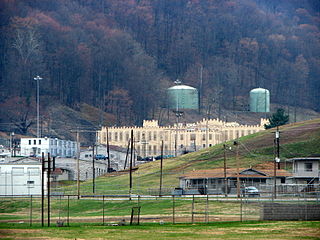
Brushy Mountain State Penitentiary, last named Brushy Mountain Correctional Complex, was a maximum-security prison in the community of Petros in Morgan County, Tennessee, operated by the Tennessee Department of Correction. It was established in 1896 and operated until 2009. Beginning in 2018, the site opened for tours and events, such as concerts. The grounds of the prison are included in part of the Barkley Marathons.

Convict leasing was a system of forced penal labor that was practiced historically in the Southern United States, the laborers being mainly African-American men; it was ended during the 20th century. It provided prisoner labor to private parties, such as plantation owners and corporations.

The Cross Mountain Mine disaster was a coal mine explosion that occurred on December 9, 1911, near the community of Briceville, Tennessee, in the southeastern United States. In spite of a well-organized rescue effort led by the newly created Bureau of Mines, 84 miners died in the disaster. The cause of the explosion was the ignition of dust and methane gas released by a roof fall. Miners would use open oil lamps to provide a light source down in the mines.

The Coal Creek War was an early 1890s armed labor uprising in the southeastern United States that took place primarily in Anderson County, Tennessee. This labor conflict ignited during 1891 when coal mine owners in the Coal Creek watershed began to remove and replace their company-employed, private coal miners then on the payroll with convict laborers leased out by the Tennessee state prison system.

The Briceville Community Church is a nondenominational church located in Briceville, Tennessee, United States. Built in 1887, the church served as a center of social life and community affairs for the Coal Creek Valley during the valley's coal mining boom period in the late-19th and early-20th centuries. In 2003, the church was added to the National Register of Historic Places for its historical role and as an example of rural Gothic Revival architecture.

Ethel is an unincorporated community in Logan County, West Virginia, United States. Ethel is located on West Virginia Route 17, 4.5 miles (7.2 km) east-northeast of Logan. Ethel has a post office with ZIP code 25076.

The Knoxville Iron Company was an iron production and coal mining company that operated primarily in Knoxville, Tennessee, United States, and its vicinity, in the late 19th and 20th centuries. The company was Knoxville's first major post-Civil War manufacturing firm, and played a key role in bringing heavy industry and railroad facilities to the city. The company was also the first to conduct major coal mining operations in the lucrative coalfields of western Anderson County, and helped establish one of Knoxville's first residential neighborhoods, Mechanicsville, in the late 1860s.
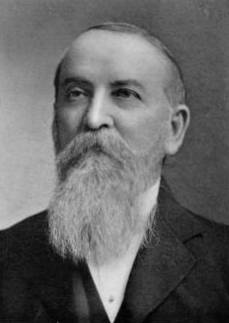
Eldad Cicero Camp, Jr. was an American coal tycoon, attorney and philanthropist, active primarily in Knoxville, Tennessee, and the vicinity. He was president of the Coal Creek Coal Company, president of the Virginia-Tennessee Coal Company, a director of Knoxville's Third National Bank, and at his height, was one of the wealthiest men in East Tennessee. His prominent North Knoxville mansion, Greystone, is listed on the National Register of Historic Places.
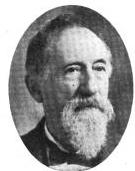
Edward Jackson Sanford was an American manufacturing tycoon and financier, active primarily in Knoxville, Tennessee, in the late 19th century. As president or vice president of two banks and more than a half-dozen companies, Sanford helped finance Knoxville's post-Civil War industrial boom and was involved in nearly every major industry operating in the city during this period. Companies he led during his career included Sanford, Chamberlain and Albers, Mechanics' National Bank, Knoxville Woolen Mills, and the Coal Creek Coal Mining and Manufacturing Company.
Coal Creek is a tributary of the Clinch River in Tennessee, approximately 10.3 miles (16.6 km) long.
Docena is an unincorporated community in Jefferson County, Alabama, United States. Docena is 8 miles (13 km) west-northwest of downtown Birmingham and has a post office with ZIP code 35060.
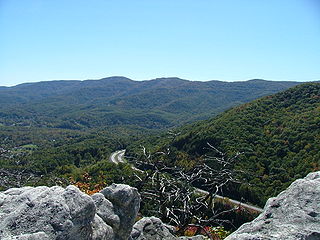
Cross Mountain is a mountain in the Cumberland Mountains in the U.S. state of Tennessee. At an elevation of 3,534 feet (1,077 m), it is the highest mountain in Tennessee that is not part of the Blue Ridge Mountains. It contains rich deposits of coal, and in 1911 was the site of one of the deadliest mining disasters in state history.


















